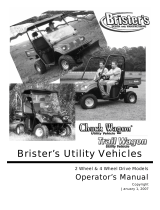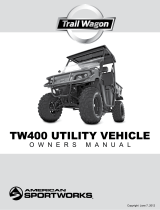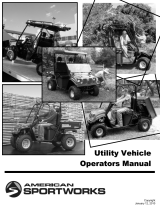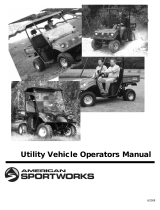
anovafurnishings.com
888.535.5005 tel
TOOLS NEEDED:
• Ratchet with 1/2" socket
• 1/2" Open end or box wrench
• 3/16" Allen wrench
• #4 Phillips head screwdriver
Assembly Instructions
Beacon Hill 2-Seat Bistro Tables with Flat or Contour Seats
BH1800R - Recycled Plastic with Flat Seats
BH1800R-GT - Recycled Plastic Game Table, 4 Flat Seats
BH1800T - Thermory® with Flat Seats
BH1800T-GT - Thermory® Bistro Game Table, 2 Flat Seats
BH1801R - Recycled Plastic with Contour Seats
BH1801R-GT - Recycled Plastic Bistro Game Table, 2 Seats
BH1801T - Thermory® with Contour Seats
BH1801T-GT - Thermory® Bistro Game Table, 2 Seats
COMPONENT PARTS:
ASSEMBLY HARDWARE: All hardware is stainless steel.
ASSEMBLY:
Inspect the shipping container contents
for damage and to determine that all
components and hardware are present.
1.
2. Lay all parts on a so work surface or
on the shipping packaging to prevent
damage to nish.
NOTE: Before assembling the nuts to
the bolts, it is recommended that a
light oil or petroleum jelly be applied
to the screw threads.
1
Thermory w/ Contour Seats Recycled Plastic w/ Flat Seats
Assembly and Replacement Parts
The assembly is a two-person operation

2
3. Locate the seat support and place the support on the work
surface upside down with the seat platforms oriented
downward
4. Apply two adhesive strips to one of the plastic rectangular
feet. Then rmly apply the plastic rectangular foot to the
metal foot of the seat support aligning the holes in each.
Repeat for the remaining foot.
5. Locate the rubber feet and 1/4”-20 x 1” Phillips head screws.
Insert a screw through the rubber foot into the pre-drilled
hole in the seat support and tighten screw with the #4
Phillips head screwdriver. Once all ve rubber feet are
installed, turn the unit over so that the feet are contacting
the work surface.
7. Place one of the seats over one of the seat mounts so that all the mounting holes line up.
Insert four 5/16” -18 x 1” at head socket cap screws through the seat mounting holes into corresponding holes in the seat mount. Place
5/16” at washers and 5/16” Nylock nuts on the end of the screws and nger tighten. Aer all of the screws are installed, use the 3/16” Allen
wrench to hold the screw head and use the ratchet with 1/2” socket to tighten the Nylock nuts.
NOTE: Holding the screw still and turning the Nylock nut protects the nish on the screw and seat from scratching and chipping during
installation.
Install the remaining seat in the same manner.
6. Locate one of the seat mounts. Position the seat mount on
one of the seat platforms so that the mounting holes in
the seat mount align with the mounting holes in the seat
platform.
Place 5/16” at washers on four 5/16”–18 x 1” hex head bolts
and insert the bolts down through the seat mount and the
seat platform. Place 5/16” at washers and 5/16” Nylock
nuts on the bolts underneath the seat platform. Tighten the
nuts aer all the bolts are installed.
Install the remaining seat mounts in the same manner

11/19/2019 Copyright 2019 ANOVA® Manufactured in the U.S. 3
Note: Please contact Customer Care at 1-866-797-1761 when ordering replacement parts.
8. Li the table top and position it over the table top bracket. Rotate the table top until the frame on the bottom of the table top matches the
orientation of the table top bracket. Carefully lower the table top down onto the table top bracket.
Secure the table top to the table top bracket from the outside with 5/16” at washers on four 5/16”-18 x 1” hex head bolts. You may have to
li the table top slightly to get the holes to align. Place a 5/16” at washer and a 5/16” Nylock nut on the end of each bolt at the inside of
the support bracket leaving the bolts nger tight.
Aer all the bolts are started, tighten using a 1/2” open end or box end wrench and ratchet with the 1/2” socket.
9. Move the table to the location where it will be used.
NOTE: This table is required to be surface mounted prior to use. Follow surface mount instructions provided with the surface mount
hardware that you purchase locally
10. Aer two weeks, retighten all of the hardware.
-
 1
1
-
 2
2
-
 3
3
Anova BH1801T-GT Assembly Instruction
- Type
- Assembly Instruction
- This manual is also suitable for
Ask a question and I''ll find the answer in the document
Finding information in a document is now easier with AI
Related papers
-
Anova LEX1660S Assembly Instruction
-
Anova BH1830SR Assembly Instruction
-
Anova BH1831R Assembly Instruction
-
Anova BH1840T Assembly Instruction
-
Anova BH1840SR Assembly Instruction
-
Anova BH1801SR Assembly Instruction
-
Anova L1390 Assembly Instruction
-
Anova L1300 Assembly Instruction
-
Anova L1447 Assembly Instruction
-
Anova L1301S Assembly Instruction
Other documents
-
Sunrise Medical Quickie S-525 User manual
-
 BRISTERS Trail Wagon User manual
BRISTERS Trail Wagon User manual
-
TiLite AERO Z Owner's manual
-
 American Sportworks Trail Wagon TW400 Owner's manual
American Sportworks Trail Wagon TW400 Owner's manual
-
 Bull Dog BD300A User manual
Bull Dog BD300A User manual
-
 American Sportworks TW265 Operating instructions
American Sportworks TW265 Operating instructions
-
Lifetime 90188 Owner's manual
-
Lifetime 90137 Owner's manual
-
KidKraft Sun Bistro Wooden Swing Set / Playset Assembly Instruction
-
Harmar Mobility AL600 Pioneer Installation and Owner's Manual






